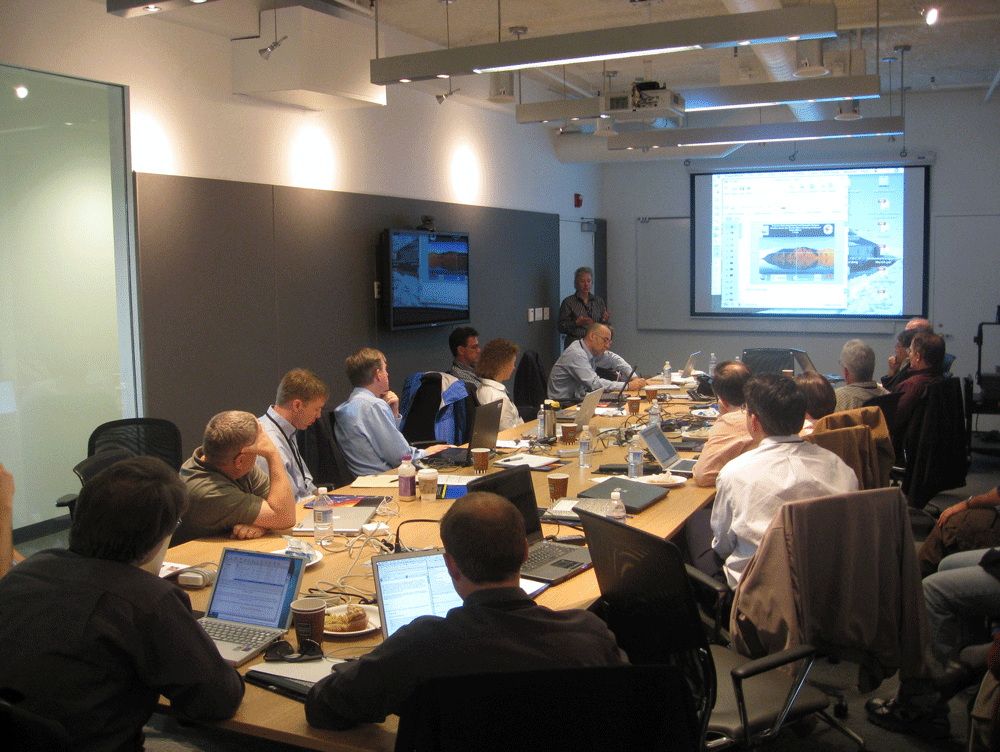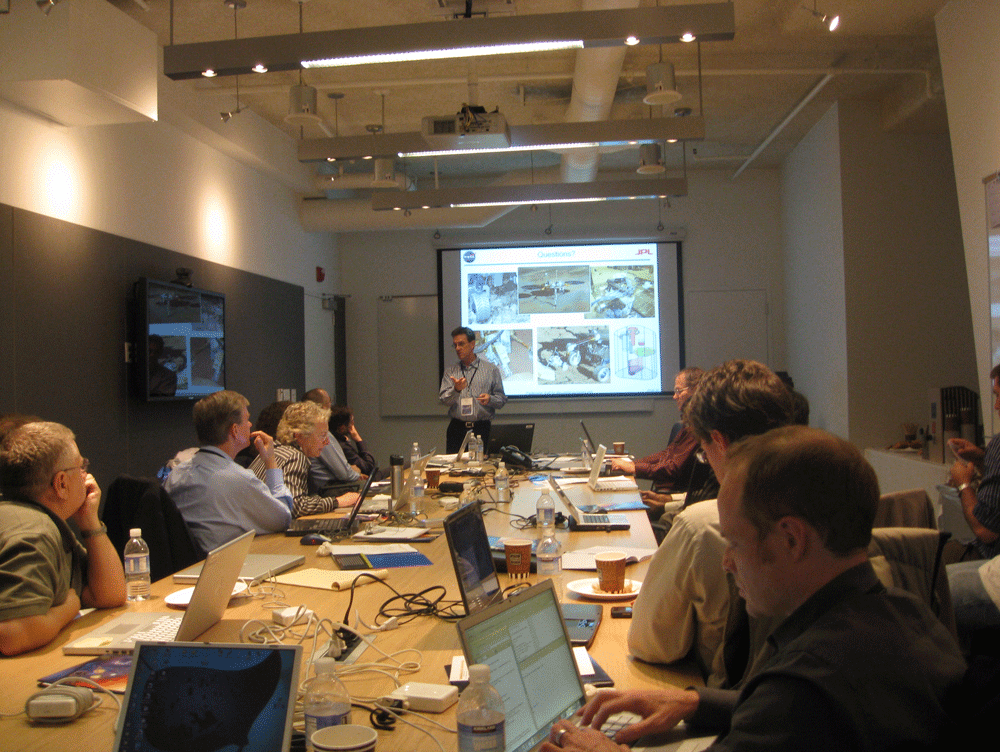Workshop Overview:
Some of the richest potential science targets for future planetary exploration missions are sited in terrains that are largely inaccessible to state-of-the-art robots, thereby limiting our ability to carry out in situ sampling and analysis. For example, bright new deposits have been discovered several hundred meters below the rims of steep craters in the Terra Sirenum and Centauri Montes regions on Mars. While the Opportunity rover has imaged layers of bedrock in the vertical promontories of Cape St. Vincent in Victoria crater, these geological features are currently inaccessible to conventional sampling methods. High-resolution images of stratified deposits of ice and dust captured by the Mars Reconnaissance Orbiter reveal a very challenging terrain. The recently reported large methane plumes rise over heavily cratered terrains in the Arabia Terra and Syrtis Major regions of Mars. The surfaces of Titan, Europa, Enceladus, and the Earth’s moon also offer challenging surface features. All of these geological features require a new generation of robots to access the challenging terrains in order to probe, sample and measure. Direct access to these complex terrains may enable new inquiries that could lead to significant scientific rewards.
Objective
This workshop will examine, in depth, science-driven mission concepts that could leverage recent technological advances in robotic mobility (e.g. tethered and cliff climbing vehicles) and sampling for such high-risk terrains. We will explore concepts that combine one or more low-mass robots with fixed or mobile host platforms to extend our capability in exploring high-risk terrains.
Expected Outcome
We plan to better define candidate mission concepts and their associated technological challenges. Based on these concepts, we expect to craft a roadmap for future research and development programs that will advance the art in robotic mobility platforms, on-board instrumentation, and the sample acquisition devices that are needed to enable future missions in complex terrains. Armed with this roadmap, we hope to collectively advocate for future NASA technology development programs that will enable in situ science in complex terrain missions.
Workshop
This two-day workshop brings together leading planetary scientists, mission architects, and robotic technologists from JPL, Caltech and leading external institutions to explore new potential mission concepts for the exploration of high-risk planetary surfaces. This workshop will also engage a number of Caltech graduate and undergraduate students.











